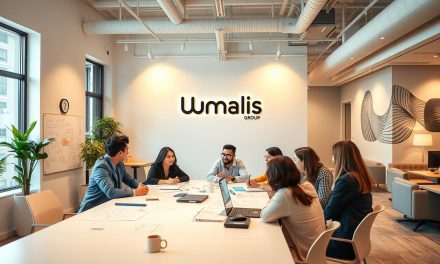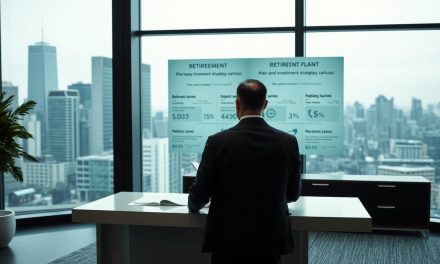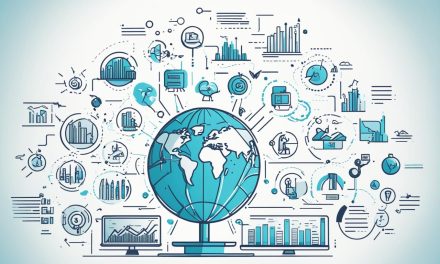Your business needs powerful visuals to stand out. A freelance graphic designer offers creative solutions that transform ideas into compelling assets. They help build your brand and connect with customers.
The market for these services is huge and trusted. Platforms like Freelancer.com show over a million reviews with near-perfect client ratings. DesignCrowd has completed more than half a million projects.
You get access to diverse talent worldwide. This means specialized skills for logos, websites, and social media graphics. It’s cost-effective compared to traditional agencies.
In France, local designers understand your market’s unique needs. They blend global trends with cultural relevance. This combination drives growth and strengthens your visual identity.
Table of Contents
Key Takeaways
- Hiring a freelance graphic designer boosts brand development and business growth.
- The freelance design market is large, with high client satisfaction rates.
- Professional design turns business concepts into engaging visual materials.
- Freelance platforms offer a wide range of creative services from global talent.
- This approach is more affordable than using traditional agency solutions.
- French freelance designers provide local market knowledge and cultural insight.
- For more on building a secure career in this field, explore freelance graphic design expertise.
What is Graphic Design and Why Your Business Needs It
Visual storytelling forms the foundation of modern business communication. This creative discipline transforms ideas into compelling visual assets that capture attention and convey messages effectively.
The Role of Visual Communication in Modern Marketing
Over 70% of brands prioritize visual content as their primary marketing strategy. This isn’t surprising when 83% of consumers remember information better when paired with relevant imagery.
Visual elements drive engagement across digital platforms. They help businesses stand out in crowded marketplaces. Effective design turns complex messages into easily digestible content.
Professional designers understand how color, typography, and layout influence viewer perception. They create materials that not only look beautiful but also achieve specific business objectives.
How Graphic Design Strengthens Brand Identity
Consistency in visual language builds trust and recognition. When customers see cohesive design across all touchpoints, they develop stronger connections with your business.
Strong visual identity creates memorable brand recognition. It distinguishes your company from competitors and communicates your values instantly. This visual consistency becomes your silent ambassador in the marketplace.
Quality design work directly impacts business credibility. In competitive markets, professional visuals signal that you take your business seriously. Customers perceive well-designed brands as more trustworthy and established.
Many successful designers view every project as a stepping stone toward establishing market value. For those looking to build their career, professional development guidance can provide valuable insights into creating sustainable design practices.
The right visual approach can transform how customers perceive your business. It turns ordinary interactions into memorable experiences that drive loyalty and growth.
Comprehensive Graphic Design Services Offered by Freelancers
Professional visual solutions have become essential tools for business growth and brand recognition. These creative experts deliver diverse services that transform concepts into compelling visual assets.
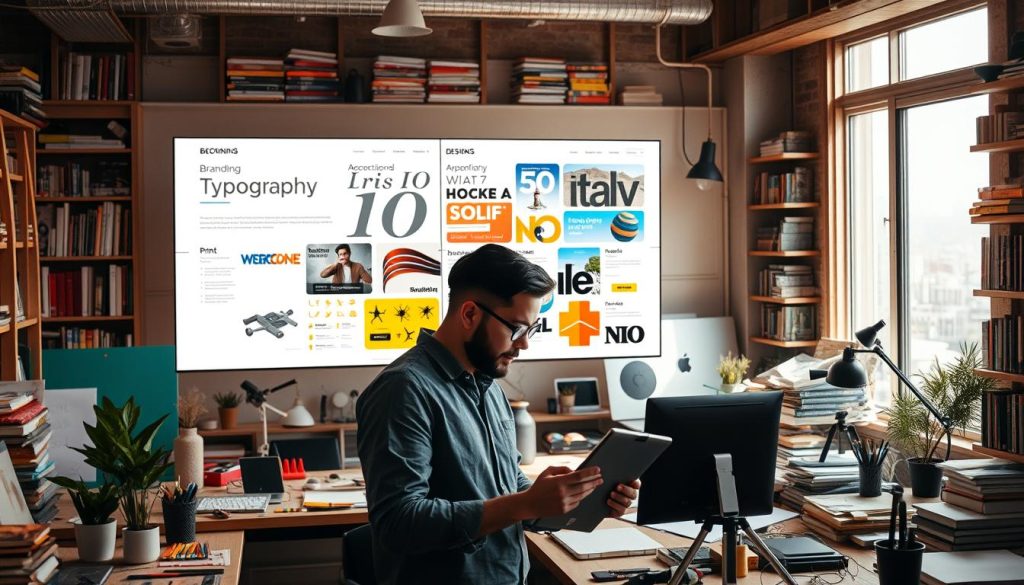
Logo Design and Brand Identity Development
Your logo serves as the visual cornerstone of your business identity. Skilled professionals create memorable marks that communicate your values instantly.
They develop complete identity systems including color palettes, typography, and usage guidelines. This ensures consistency across all brand touchpoints.
Many projects deliver 25-100+ design concepts for client selection. This extensive range provides diverse creative options.
Website Design and Digital Layout Solutions
Effective website design combines aesthetics with functionality. Professionals create responsive layouts that work seamlessly across devices.
They optimize user experience through intuitive navigation and visual hierarchy. This keeps visitors engaged and reduces bounce rates.
Digital layout solutions extend to landing pages, email templates, and online advertisements. Each element supports your digital marketing strategy.
Social Media Graphics and Marketing Materials
Social platforms demand visually compelling content that stops scrolling thumbs. Experts create platform-specific graphics for Instagram, Facebook, and LinkedIn.
These visuals maintain brand consistency while adapting to each platform’s unique requirements. They drive engagement and shareability.
Marketing materials include brochures, flyers, and presentation decks. Each piece reinforces your messaging through professional design.
Packaging Design and Physical Product Branding
Product packaging serves as your silent salesperson on retail shelves. Design professionals create eye-catching solutions that communicate quality.
They consider materials, printing techniques, and structural design. This holistic approach ensures both aesthetic appeal and practical functionality.
Packaging design extends across industries from food products to electronics. Each solution addresses specific market needs and consumer expectations.
Motion Graphics and Animated Content Creation
Motion graphics bring static elements to life through movement and animation. This dynamic content captures attention in crowded digital spaces.
Professionals create animated logos, explainer videos, and social media animations. These elements enhance storytelling and message retention.
Animated content works particularly well for complex concept explanations. It simplifies information through visual demonstration.
Specialized services include restaurant menu layouts, apparel design, and product customization. Each area requires specific expertise and creative approach.
| Service Type | Typical Deliverables | Project Scale | Industry Applications |
|---|---|---|---|
| Logo Design | 3-5 concepts, brand guidelines | Small to medium | All industries |
| Website Design | Wireframes, mockups, responsive design | Medium to large | E-commerce, services |
| Social Media Graphics | Post templates, story designs | Small to medium | Marketing, branding |
| Packaging Design | 3D mockups, print-ready files | Medium | Retail, consumer goods |
| Motion Graphics | Animated sequences, video files | Medium to large | Advertising, education |
These creative professionals provide practical solutions that fit various budgets while maintaining quality standards. For those seeking creative and affordable design services, this approach offers excellent value.
Project expectations typically include clear timelines, revision rounds, and final file delivery. This structured process ensures smooth collaboration and satisfactory results.
Benefits of Hiring a Freelance Graphic Designer
Choosing independent creative professionals brings distinct advantages to your visual projects. These benefits extend beyond simple cost savings to include flexible collaboration and diverse creative input.
Cost-Effective Solutions Compared to Agencies
Businesses consistently report saving at least 50% compared to traditional creative agencies. This significant budget advantage comes without sacrificing quality or professionalism.
Independent professionals operate with lower overhead costs. They pass these savings directly to clients while maintaining high standards. This makes premium visual work accessible to businesses of all sizes.
Platforms like DesignCrowd demonstrate this value through their model. Users typically receive 70+ design concepts to choose from. This variety ensures you find the perfect creative solution.
Flexibility and Personalized Attention
You gain remarkable flexibility in how you structure creative work. Freelancer.com offers fixed-price, hourly, and contest-based project formats. This variety lets you choose what works best for your specific needs.
Direct collaboration means you work closely with your chosen professional. There are no account managers or bureaucratic layers slowing down communication. You get immediate responses and quick adjustments.
Timelines adapt to your schedule rather than agency availability. Rush projects receive priority attention when needed. This personalized approach ensures your vision gets realized exactly as intended.
Access to Diverse Creative Perspectives
Global talent pools bring incredible cultural diversity to your projects. You gain access to professionals from different backgrounds and artistic traditions. This diversity often produces unexpectedly brilliant creative solutions.
Different cultural perspectives can make your brand stand out in competitive markets. A designer from another country might approach your brief with fresh eyes. They might suggest color combinations or layouts you hadn’t considered.
One business owner shared their experience:
« We received designs from 12 different countries. The variety exceeded our expectations and helped us see our brand in new ways. »
This global access particularly benefits businesses targeting international markets. Local insights from different regions can inform more effective visual communication. The right creative professional can bridge cultural gaps through thoughtful design.
Finding the Right Freelance Graphic Designer in France
Discovering the perfect creative partner in France requires knowing where to look and what to evaluate. The right match combines skill, cultural insight, and professional reliability.
Platforms for Connecting with French Design Talent
Several platforms specialize in linking businesses with skilled French designers. Freelancer.com, DesignCrowd, and Fring offer access to vetted professionals.
Fring stands out by promising curated shortlists within 24 hours. They work exclusively with the top 10% of creative talent. This ensures quality from your first interaction.
DesignCrowd serves over 100,000 business customers globally. Their extensive network includes many French professionals. You receive diverse concepts that blend local flair with global trends.
Evaluating Portfolios and Previous Work
Reviewing past projects reveals much about a designer’s capabilities. Look for measurable results and creative problem-solving.
Strong portfolios show clear thinking behind each solution. They explain how designs achieved specific business goals. This demonstrates strategic understanding beyond aesthetic skill.
Client testimonials provide social proof of reliability and professionalism. They offer insights into working styles and communication effectiveness.
Understanding French Design Aesthetics and Trends
French visual culture emphasizes craftsmanship and brand integrity. Designs often balance elegance with functionality.
Local professionals understand subtle cultural references that resonate with French audiences. They know which colors, typography, and imagery align with regional preferences.
This cultural alignment makes your brand feel authentic and trustworthy. It shows you understand and respect local market nuances.
When you hire graphic professionals from France, you gain this cultural advantage naturally. Their innate understanding creates designs that feel both contemporary and locally relevant.
Quality assessment should focus on three key areas:
- Measurable outcomes from previous projects
- Creative process and problem-solving approach
- Cultural relevance for French audiences
Respecting cultural considerations ensures smooth collaboration. French professionals value clear communication and adherence to brand guidelines. They bring discipline alongside their creative talents.
For businesses seeking creative and affordable design services, the French market offers exceptional options. The combination of technical skill and cultural insight creates powerful visual solutions.
Key Considerations When Hiring Graphic Design Freelancers
Successful creative partnerships begin with thoughtful preparation and clear agreements. Proper planning ensures your project runs smoothly from start to finish.
Setting Clear Project Requirements and Expectations
Detailed briefs dramatically improve outcomes. They help creative professionals understand your vision completely.
Include your brand guidelines, target audience, and specific goals. Mention any colors or styles you prefer or want to avoid.
DesignCrowd’s 4.9 average rating from 3,059 reviews shows how clarity leads to satisfaction. Clear communication prevents misunderstandings.
Budget Planning and Payment Structures
Different projects suit different payment methods. Platforms offer fixed price, hourly, and contest options.
Fixed price works well for defined projects like logo design. You know the total cost upfront.
Hourly rates suit ongoing work or projects that might change. You pay for actual time spent.
Contests let you see multiple concepts before choosing. You only pay for the design you select.
Timeline Management and Delivery Expectations
Realistic schedules prevent stress for everyone. Discuss deadlines before starting the work.
Build in time for revisions and unexpected delays. Good professionals will communicate about timing issues.
Establish how files will be delivered and in what formats. Confirm you’ll receive editable source files.
| Consideration | Key Points | Best Practices |
|---|---|---|
| Project Brief | Detailed requirements, brand guidelines | Include visual examples and competitors |
| Budget Options | Fixed price, hourly, contest models | Choose based on project type and scope |
| Timeline Planning | Realistic deadlines, revision rounds | Build buffer time for unexpected changes |
| Legal Protection | Contracts, IP rights, usage terms | Clarify ownership and usage rights upfront |
| Quality Assurance | Review process, final approvals | Establish clear acceptance criteria |
Always discuss intellectual property rights before work begins. Most professionals transfer full rights upon final payment.
Contracts protect both parties and prevent misunderstandings. They outline deliverables, timelines, and payment terms.
Consider starting with a small test project before committing to larger work. This helps assess compatibility and work quality.
Good planning creates successful partnerships that deliver outstanding visual solutions. It ensures your investment brings the returns you expect.
Essential Graphic Design Skills to Look For
Identifying the right talent means understanding what makes a professional truly exceptional. The best creative experts combine technical mastery with artistic vision and strategic thinking.
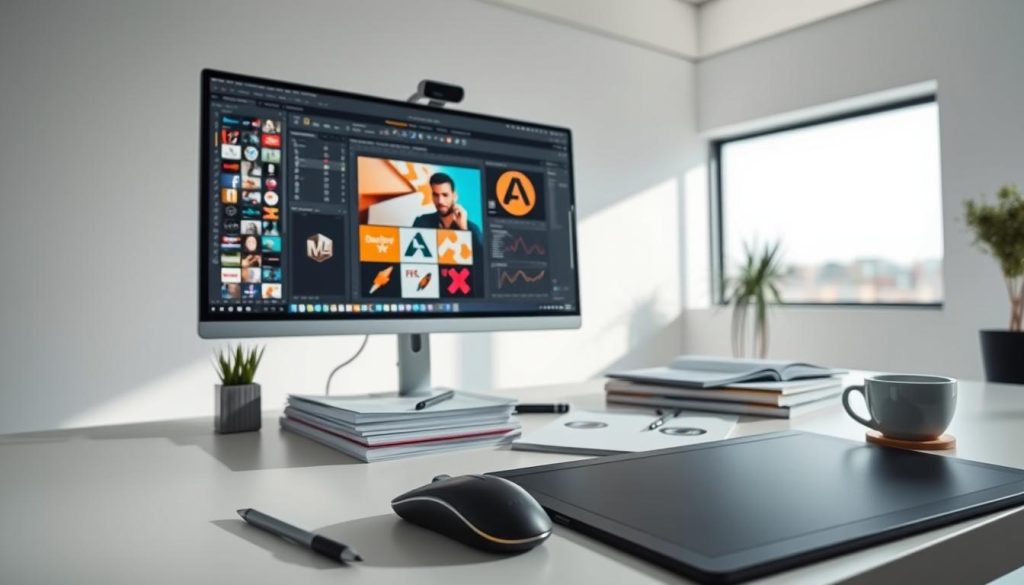
Technical Proficiency in Design Software
Modern visual creation demands expertise with industry-standard tools. Professionals must navigate complex software with confidence and precision.
Adobe Creative Suite remains the foundation for most projects. Photoshop handles image editing and manipulation. Illustrator creates vector graphics and logos.
InDesign manages multi-page layouts for publications and brochures. These tools form the core technical requirements for quality work.
Beyond Adobe, many experts use Sketch for interface design. Figma enables collaborative web projects. Each platform serves specific creative needs.
Typography and Layout Expertise
Great typography makes reading effortless and enjoyable. It guides the eye through content with purpose and grace.
Professionals understand how typefaces communicate different feelings. Serif fonts often convey tradition and reliability. Sans-serif types feel modern and clean.
Layout composition organizes visual elements logically. It creates visual hierarchy that directs attention naturally. Good layout makes complex information feel simple.
These skills combine to create balanced, harmonious designs. They ensure messages get communicated clearly and beautifully.
Creative Problem-Solving Abilities
Every project presents unique challenges that demand innovative solutions. True experts approach problems with curiosity and flexibility.
They ask questions that uncover deeper needs and opportunities. This investigative approach leads to more effective visual solutions.
One industry leader observes:
« The best designers don’t just make things look pretty—they solve communication problems through visual intelligence. »
This mindset transforms limitations into creative opportunities. Budget constraints become clever simplifications. Tight deadlines inspire efficient workflows.
When evaluating candidates, consider these essential abilities:
- Software mastery across relevant applications and platforms
- Typography knowledge including pairing and hierarchy principles
- Layout skills for both print and digital environments
- Adaptability to new trends and technical requirements
- Problem-solving approach that focuses on client objectives
These fundamental capabilities separate adequate work from exceptional results. They ensure your projects receive the professional attention they deserve.
The Hiring Process: From Brief to Final Delivery
Navigating the creative collaboration journey requires clear steps and mutual understanding. A structured approach ensures your vision transforms into exceptional visual assets that meet business objectives.
Creating an Effective Project Brief
Your initial document sets the foundation for successful outcomes. Include specific details about scope, budget, and timeline.
Visual references help communicate your aesthetic preferences. Share examples of styles you admire or want to avoid.
Effective briefs typically contain these essential elements:
- Clear business objectives and target audience description
- Detailed deliverables list with quantity specifications
- Established timeline with key milestone dates
- Budget parameters and payment schedule information
- Brand guidelines and existing asset references
This clarity helps creative professionals understand your needs completely. It reduces revision cycles and accelerates project completion.
Reviewing Proposals and Selecting a Designer
Platforms like DesignCrowd demonstrate the power of choice. Users typically receive 100+ design concepts from 40+ professionals.
Evaluate proposals based on strategic alignment with your goals. Look for creative solutions that address your specific challenges.
Consider these evaluation criteria when making your selection:
| Evaluation Area | Key Considerations | Weighting Importance |
|---|---|---|
| Portfolio Quality | Relevance to your industry and style preferences | High |
| Proposal Creativity | Originality and problem-solving approach demonstrated | High |
| Communication Skills | Clarity and responsiveness during initial interactions | Medium |
| Budget Alignment | Cost relative to value and complexity of work | Medium |
| Timeline Compatibility | Ability to meet your required delivery schedule | Medium |
This structured evaluation ensures you select the right partner for your specific needs. It balances creative talent with practical considerations.
Communication and Feedback During the Project
Ongoing dialogue keeps your project moving forward smoothly. Establish preferred communication channels and response expectations early.
Regular updates prevent misunderstandings and alignment issues. They create opportunities for course correction before major work completes.
Constructive feedback focuses on objectives rather than personal preferences. Explain why certain elements work or need adjustment.
One creative director shares this perspective:
« The best clients provide specific, actionable feedback that helps us understand their business needs better. This collaboration produces outstanding results. »
Revision management requires clear boundaries and expectations. Define how many rounds are included and costs for additional changes.
Final delivery should include all source files and usage rights. Confirm file formats meet your technical requirements for various applications.
This comprehensive approach to project management ensures satisfying experiences for both parties. It builds foundations for potential future collaborations.
For those seeking creative and affordable design services, following these practices maximizes value and results.
Working with French Freelance Graphic Designers
Collaborating with creative professionals in France offers unique advantages for your visual projects. These experts bring specialized knowledge that blends global design trends with local cultural insights.

Understanding French Business Communication Styles
French professionals often prefer formal communication and established protocols. They value clear structure and detailed project documentation.
Building strong relationships matters greatly in French business culture. Initial meetings might focus more on getting to know each other than immediate project details.
Professional titles and formal address are commonly used until relationships develop. This respectful approach forms the foundation of successful collaborations.
Local Market Knowledge and Cultural Relevance
French designers understand subtle cultural references that resonate with local audiences. They know which colors, imagery, and styles align with regional preferences.
This cultural alignment makes brands feel authentic and trustworthy to French consumers. It shows understanding and respect for local market nuances.
These professionals stay updated on current trends within France’s creative landscape. They blend contemporary styles with timeless French aesthetic principles.
Language Considerations for International Projects
Many French creative professionals speak excellent English for international collaborations. However, some technical or legal terms might require clarification.
For projects targeting French audiences, native language skills become invaluable. They ensure marketing messages and brand voice translate accurately and effectively.
Time zone differences require thoughtful scheduling for international teams. Paris time (CET) typically works well for coordinating with both European and American partners.
Key considerations when working with French professionals include:
- Formal communication style with emphasis on relationship building
- Cultural understanding of French aesthetic preferences and consumer behavior
- Language accommodation strategies for smooth international collaboration
- Legal frameworks specific to French contracting and intellectual property
- Scheduling coordination across different time zones
- Understanding of local business etiquette and meeting protocols
These elements combine to create productive partnerships that deliver culturally relevant visual solutions. They ensure your projects benefit from both creative excellence and local market intelligence.
Measuring the Success of Your Graphic Design Projects
Great visual work deserves proper evaluation. Tracking results shows how your investment performs. It helps you make smarter creative decisions.
Setting Measurable Objectives for Design Work
Start every project with clear goals. Define what success looks like before work begins. This focus guides the creative process.
Objectives might include brand recognition lifts or specific conversion targets. Make goals specific, measurable, and time-bound.
Good objectives create accountability for both parties. They ensure everyone works toward the same outcomes.
Tracking Engagement and Conversion Metrics
Digital platforms provide rich data about visual performance. Social media shows likes, shares, and comments. These engagement metrics reveal what resonates.
Website analytics track how designs affect user behavior. Bounce rates, time on page, and click-through rates matter. They show whether visuals keep people interested.
Conversion tracking proves business impact. Watch how many people take desired actions after seeing your materials. This could be purchases, sign-ups, or downloads.
Successful designs typically show improvement across multiple metrics. They create better user experiences and drive business growth.
Gathering Customer Feedback on New Designs
Direct input from your audience provides valuable insights. They experience your visuals in real contexts. Their reactions often surprise you.
Surveys and focus groups gather structured feedback. Ask specific questions about clarity, appeal, and trust. This data complements your analytics.
Social listening catches organic reactions. People share honest opinions about visual changes. These unprompted comments often reveal the truth.
Customer feedback helps refine future work. It creates a continuous improvement cycle for your visual identity.
Effective measurement approaches include:
- Establishing clear success metrics before projects start
- Monitoring engagement across different platforms and channels
- Tracking conversion improvements from design changes
- Collecting direct customer opinions through surveys and interviews
- Running A/B tests to compare different visual approaches
- Measuring long-term brand perception shifts
- Calculating return on investment for creative work
One marketing director noted:
« Our redesign produced a 40% conversion lift. The data proved our investment worked. »
Regular measurement creates continuous improvement. It turns subjective opinions into objective decisions. Your visual identity grows stronger with each project.
Building Long-Term Relationships with Design Freelancers
Developing lasting partnerships with creative professionals transforms how your business approaches visual communication. These relationships evolve beyond single projects into strategic collaborations that drive consistent growth.
Working with the same expert over multiple assignments creates remarkable efficiency. They learn your preferences and business objectives deeply. This understanding leads to faster turnaround times and fewer revisions.
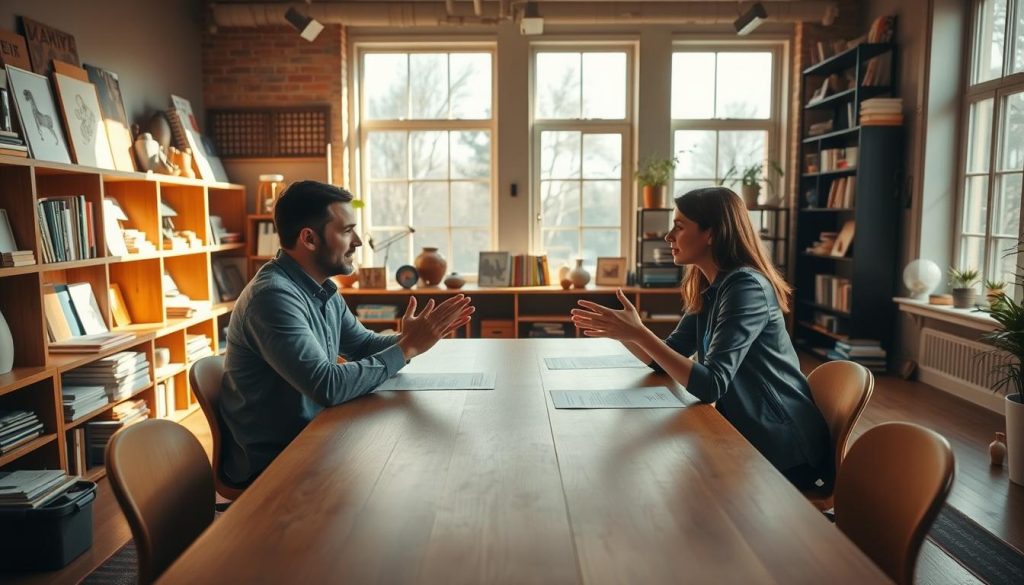
The Value of Consistent Creative Partnerships
Continuity in your creative team ensures visual consistency across all materials. Your brand maintains its distinctive look and feel through every campaign.
Long-term collaborators become extensions of your marketing team. They anticipate needs and suggest improvements proactively. This partnership approach delivers better results than transactional relationships.
One marketing director shared their experience:
« Our designer understood our voice so well that they often caught inconsistencies we missed. That deep knowledge became invaluable. »
Scaling Design Work as Your Business Grows
Expanding companies need flexible creative support that matches their growth trajectory. Established relationships provide this scalability without compromising quality.
Trusted professionals can handle increased volume while maintaining standards. They understand your evolving needs and adapt their approach accordingly.
Many businesses start with project-based arrangements that transition to monthly retainers. This provides budget predictability while ensuring consistent creative output.
Maintaining Brand Consistency Across Projects
Visual coherence builds customer trust and recognition over time. Consistent branding across all touchpoints reinforces your market position.
Long-term partners help develop and maintain detailed brand guidelines. These documents ensure everyone creates materials that align with your identity.
Regular collaboration prevents style drift that can occur with multiple vendors. Your visual language remains strong and recognizable.
| Relationship Type | Best For | Key Benefits | Considerations |
|---|---|---|---|
| Project-Based | One-time needs, testing new collaborators | Flexibility, no long-term commitment | Higher onboarding time per project |
| Retainer Agreements | Ongoing needs, established partnerships | Priority access, discounted rates | Monthly commitment required |
| Hybrid Approach | Growing businesses, seasonal fluctuations | Combines flexibility with relationship benefits | Requires clear communication about availability |
Knowledge preservation becomes easier with consistent partners. They accumulate institutional memory about what works for your audience. This accumulated wisdom informs better creative decisions over time.
Cost advantages emerge through reduced briefing time and fewer revisions. Established workflows become more efficient with each completed project.
Quality control simplifies when working with familiar professionals. You develop shared standards and expectations that ensure consistent output.
These strategic partnerships create competitive advantages that compound over time. They transform creative work from expense to investment.
Conclusion: Elevating Your Business with Professional Graphic Design
Professional graphic design elevates your brand in competitive markets. It transforms ideas into visual assets that connect with customers.
Businesses report high satisfaction rates with freelance designers. The global community offers diverse creative solutions tailored to your needs.
Take action by exploring platforms that match you with skilled professionals. This step can drive growth and strengthen your visual identity.
Future trends emphasize collaboration and cultural relevance. Success stories show how quality design boosts recognition and trust.
Ready to begin? Start with clear goals and trusted resources. Your journey toward visual excellence starts now.
FAQ
What exactly does a graphic designer do for businesses?
They create visual content like logos, ads, and layouts to help communicate your message clearly and attract customers.
How can hiring a freelancer save my company money?
You avoid agency fees and only pay for the work you need, making it a budget-friendly option for quality results.
What should I look for in a designer’s portfolio?
Check for variety, creativity, and projects similar to yours to ensure they understand your industry and style.
How long does a typical project take to complete?
Timelines vary, but most jobs can be finished within a few days to a couple of weeks, depending on complexity.
Can I request revisions if I’m not satisfied with the initial design?
Absolutely! Most professionals include revision rounds to make sure you’re happy with the final product.
Why is brand consistency important in design work?
It helps customers recognize and trust your business across all materials, from your website to your packaging.
How do I communicate effectively with a designer during a project?
Be clear about your goals, provide examples you like, and give constructive feedback to keep things on track.
What’s the best way to measure the success of a new design?
Track engagement metrics, ask for customer opinions, and see if it leads to more conversions or sales.


